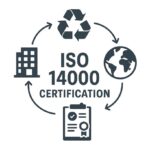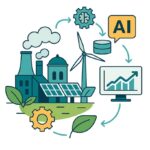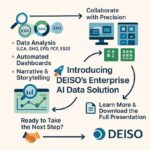Introduction
As businesses globally intensify efforts to combat climate change, the importance of accurately measuring and managing greenhouse gas (GHG) emissions has grown significantly. Traditionally, emissions are categorized into Scopes 1, 2, and 3 based on direct and indirect emissions within an organization’s operational boundaries. However, the emergence of “Scope 4” emissions represents a vital new frontier, addressing emissions avoided due to adopting innovative technologies and strategies.
Concept Development: What is Scope 4?
Scope 4 refers to avoided emissions—those prevented through the use of innovative products, services, or operational strategies. Unlike Scopes 1-3, which measure emitted GHGs directly or indirectly associated with an organization’s operations and value chain, Scope 4 captures the environmental benefits or “net positives” when a company’s product or solution replaces a higher-emission alternative.
While Scopes 1 and 2 account for direct operational control and indirect energy procurement emissions, and Scope 3 captures upstream and downstream emissions, Scope 4 uniquely quantifies environmental contributions beyond traditional mitigation.
Historical Background and International Development
Scope 4 emissions emerged prominently between 2010 and 2015, driven by increasing recognition of the need for broader sustainability frameworks that capture positive climate impacts. Initially, it gained attention through corporate sustainability strategies and reporting practices aiming to highlight and quantify the environmental benefits of innovative products and solutions.
The original GHG emission scopes—Scope 1 (direct emissions), Scope 2 (indirect emissions from purchased electricity, heat, and steam), and Scope 3 (other indirect emissions across the value chain)—were first introduced by the Greenhouse Gas Protocol (GHG Protocol) in 2001. The GHG Protocol, established by the World Resources Institute (WRI) and the World Business Council for Sustainable Development (WBCSD), provided a standardized approach for businesses to consistently measure and report GHG emissions.
International bodies, including WRI, WBCSD, and the Carbon Disclosure Project (CDP), have also significantly advanced the Scope 4 concept. These organizations are working on methodologies and guidelines to standardize how Scope 4 emissions are calculated, reported, and communicated.
Currently, there is no dedicated ISO standard explicitly for Scope 4 emissions. However, discussions and preliminary work have been initiated within international standards bodies, such as the International Organization for Standardization (ISO), to develop consistent frameworks and potential future standards explicitly addressing Scope 4 emissions.
Relationship with Scopes 1-3
Scopes 1-3 fundamentally account for emissions generated or influenced by organizational activities. Scope 4 differs significantly by shifting the focus toward the positive impacts organizations have by reducing emissions elsewhere, often within client operations, industry value chains, or society at large. Scope 4 complements traditional scopes by providing incentives for innovation and proactive environmental strategies.
Practical Examples Across Industries
Energy Industry
Example: A renewable energy provider installs solar panels to replace coal-powered electricity.
- Avoided Emissions: The difference between the GHG emissions from coal-generated electricity versus renewable sources is considered Scope 4, quantifying a significant reduction in emissions.
Transportation Sector
Example: An electric vehicle (EV) manufacturer producing EV fleets for urban transportation.
- Avoided Emissions: The emissions saved from gasoline-powered vehicles replaced by electric vehicles represent Scope 4 emissions.
Agriculture Industry
Example: Introduction of precision farming technologies minimizing fertilizer and pesticide use.
- Avoided Emissions: Reduced chemical use and fuel savings due to precision farming are Scope 4 emissions, reflecting environmental benefits beyond traditional farm management practices.
Case Study: Scope 4 in the Technology Sector
Background
A multinational tech company develops cloud computing services, significantly reducing clients’ dependence on traditional data centers.
Implementation
By transitioning customers from energy-intensive, on-premise data centers to energy-efficient, renewable-powered cloud facilities, the technology company significantly reduces its clients’ energy consumption and carbon footprints.
Results and Calculations
- Traditional Data Center Emissions:
- Energy consumption per data center per year: 1,000 GWh
- Average carbon intensity of grid electricity: 1,000 g CO₂e/kWh
- Calculation: 1,000 GWh × 1,000 g CO₂e/kWh × 1,000,000 (conversion to metric tons) = 1,000,000 metric tons CO₂e annually.
- Cloud-Based Solution Emissions:
- Energy consumption for cloud-based infrastructure per year: 200 GWh
- Renewable energy carbon intensity: 0 g CO₂e/kWh (fully renewable-powered)
- Backup grid electricity carbon intensity (minimal usage): Approximately 100 g CO₂e/kWh
- Calculation: (200 GWh × 100 g CO₂e/kWh × 1,000,000) = 20,000 metric tons CO₂e annually
- Additional emissions from supporting infrastructure and logistics are estimated at 180,000 metric tons of CO₂e annually
- Total: 20,000 + 180,000 = 200,000 metric tons CO₂e annually.
- Scope 4 Avoided Emissions:
- Calculation: Traditional Data Center Emissions (1,000,000 metric tons CO₂e) − Cloud-Based Solution Emissions (200,000 metric tons CO₂e)
- Result: 800,000 metric tons CO₂e annually.
Impact
This case study highlights how technology-driven Scope 4 strategies contribute substantially toward global emission reduction goals, encouraging similar innovations across industries.
Future Developments and Trends
The concept of Scope 4 is poised to expand rapidly as businesses, investors, and policymakers increasingly recognize its value in sustainability reporting and strategic planning. Upcoming trends include:
- Standardization of Metrics: Development of consistent measurement and reporting standards for Scope 4 emissions.
- Integration into ESG Frameworks: Enhanced recognition and formal integration of Scope 4 into environmental, social, and governance (ESG) frameworks.
- Incentivization Programs: Public and private sector incentives for companies demonstrating substantial Scope 4 impacts.
- Technology Advancements: Continued growth in clean technology innovations designed explicitly for maximizing Scope 4 emissions reductions.
Conclusion
Scope 4 GHG emissions represent a critical step forward in the global effort to mitigate climate change. Organizations can quantify their positive environmental impacts by focusing on avoided emissions, thereby driving innovation and sustainable growth. Embracing Scope 4 supports global climate goals and positions companies strategically in an increasingly eco-conscious marketplace.










